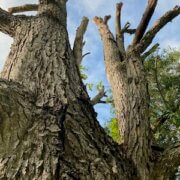Understanding Guardianship and Conservatorship And How to Avoid Them!
By Brenda Waugh
When a friend or family member is unable to make decisions for themselves, loved ones often want to find a way to help out — to be legally able to make decisions for them. The disability can be caused by an accident or a debilitating disease acquired during adulthood. The disability may also be a condition a child is born with or acquires during childhood. There are several options on how an adult may gain the authority to make medical or legal decisions for another adult.
Court Involvement: Appointment by the Court as Guardian or Conservator
When a person has not executed any documents to give another power to make legal and medical decisions to another, the only way to gain control over these decisions is to petition the court to be appointed as the guardian or conservator. A guardian is a person who is charged with managing the personal and medical needs of another. A conservator is a person charged with managing financial needs.
To become appointed, a person must petition the court, which will assign an attorney to serve as the Guardian Ad Litem for the person with the disability to assist in the legal proceeding. Next, a hearing will be held where the judge will decide whether or not the person is incapacitated and, if so, will execute an order appointing the petitioner as the guardian or conservator. At that point, the guardian or conservator must formally qualify by taking an oath at the office of the clerk of the court. In addition, they may need to post a surety bond.
After the appointment, the appointee will have limited authority to take action on the other person’s behalf. They may need to get specific authority to act, such as changing the incapacitated person’s residence. The appointee will be required to file periodic reports. The court may revoke guardianship and conservatorship at any time if the person being protected or another person challenges it.
Involving all stakeholders and family members before taking matters to court is best. The family should work with a mediator if they cannot agree on whether or not guardianship should be pursued and who should be selected as the guardian/conservator to avoid protracted legal proceedings and court involvement.
Document Preparation: Durable and Medical Power of Attorney
Court involvement in guardianship and conservatorship can be avoided entirely when the issue involves an incapacitated adult by proper preparation. Any adult may appoint any other adult to be their durable medical and legal power of attorney.
The durable legal power of attorney performs a function similar to the conservatorship — it allows a person to make legal decisions for another. However, unlike conservatorship, a power of attorney allows the person executing the document to decide how broad or narrow those responsibilities will be. It also can be revoked at any time and can name alternative persons to perform the duties.
The medical power of attorney, living will, and advanced medical directive can appoint another person to make medical decisions. It also can guide what preferences an adult has regarding certain medical decisions. This document operates similarly to guardianship, but only as to medical issues. The power may be withdrawn at any time.
A key factor to consider with the medical and legal power of attorney is carefully selecting the person to whom these duties are assigned. It is equally important for the decision to be discussed with the appointee, friends, and family members to increase the potential for everyone to accept a decision. With that cooperation, those who are satisfied would be less likely to seek court involvement.
When families or friends have difficulty discussing these issues, it is often advisable to work with a mediator to help make and communicate the decisions and avoid involving courts in these private matters. these private matters.
Brenda Waugh is a lawyer/mediator with Waugh Law & Mediation, serving clients in the Blue Ridge region of Virginia and Eastern Panhandle of West Virginia.


